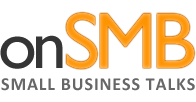Managing documents in SharePoint can be a confusing task. Depending on the size of your sites and the number of users that you have, it can be difficult to come up with a structure that is sane, organized and easy to understand. Here are some simple SharePoint management tips that will make it easier to manage your document tree.
Take advantage of tagging
Instead of relying on a tree of folders, try using meta tags or data columns to tag your documents. It may take a little while for your users to get used to this new paradigm, but it is surprisingly effective, and once you embrace it you will never want to go back to an old-fashioned folder tree.
Use the content type function
SharePoint’s content type functionality allows you to add dynamic properties andmeta tags to each document. This flexible way of tagging documents makes it easy to keep track of what each file is and where it came from.

Manage documents with alerts
If you have a lot of users, and you are concerned that one of them may delete something erroneously or change something that they should not, then why not set up alerts? You can be alerted the moment a user changes an important file, so you can then change it back or restore it if necessary.
The best thing about alerts is that if they are set up correctly you can confidently disable check out and version control features on installations that don’t explicitly require these. Yes, version control is an essential feature for a record management tool or a code base, but if that’s not what you’re using SharePoint for then there’s no point having version control turned on. You can reduce your support and training overhead by turning it off and simply watching the most important files with alerts.
Use views frequently
Views allow you to filter documents by meta tags quickly and easily, and manage space on pages too. You can use views to group, sort and filter your documents in ways that are much more sophisticated and flexible than anything you could do with a simple folder hierarchy. Make the views that you set up public, so that others in your organization can take advantage of them too. This will save you a lot of time and effort and will make everyone in your organization much more productive too.
These are just a few tips on SharePoint 2013 document management. There are many other approaches to managing documents, and it is up to you to find the system that works best for your needs. Each organization will develop its own best practices.
Consistency is the most important aspect of SharePoint document management. Whatever system you embrace, make sure that everyone in your organization understands it and uses it. If even a couple of people deviate from the system, it will quickly fall apart. A best practice system works only if administrators, site owners and contributors all follow it.


